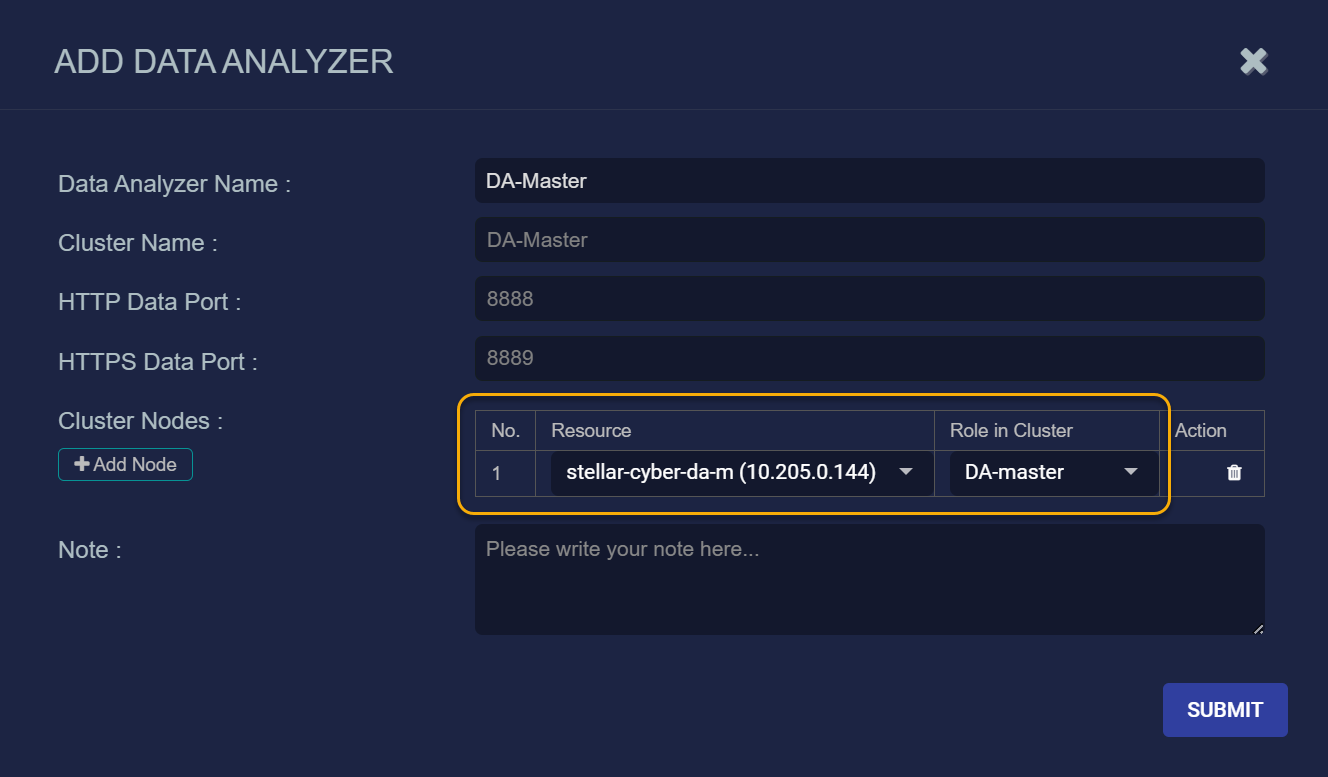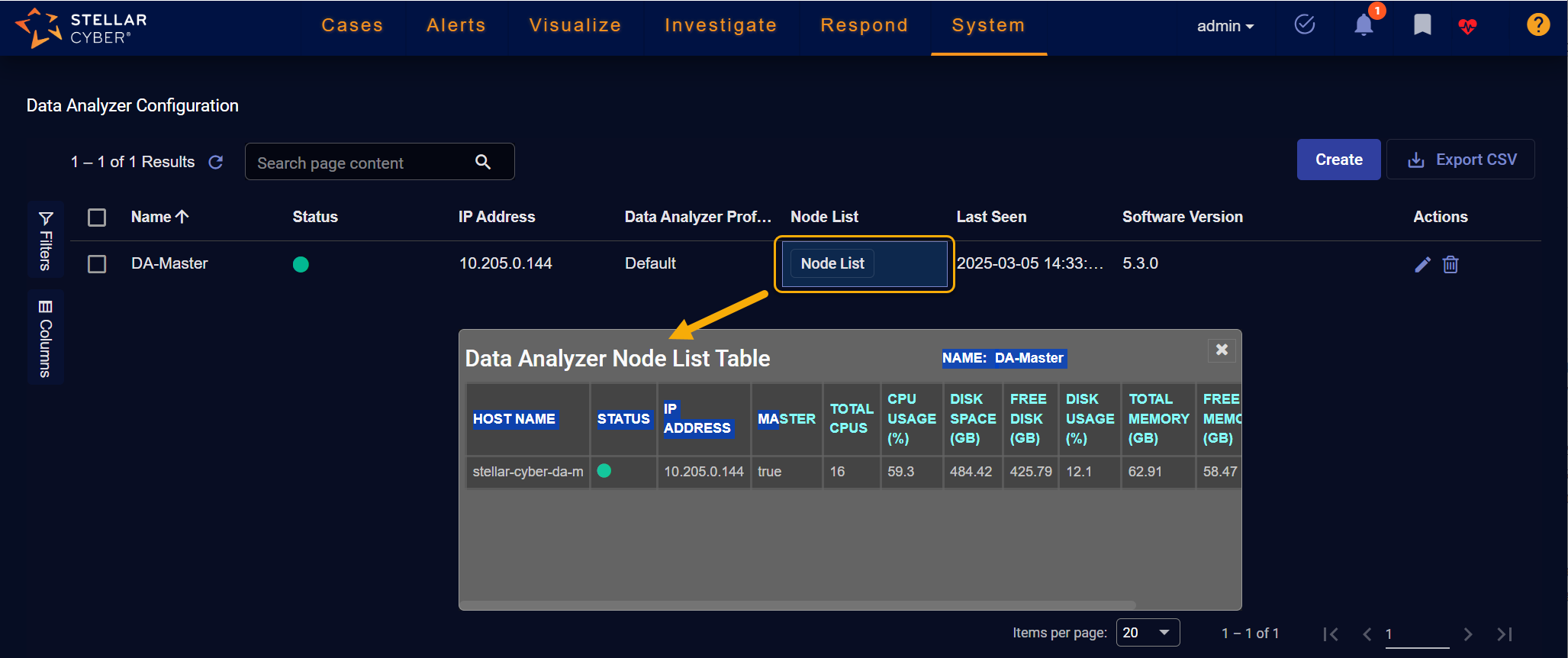Configuring the DL-m and DA-m in Stellar Cyber
Once you have configured the DL-m and DA-m in their respective CLIs, you are ready to configure them in the Stellar Cyber user interface. Use the following steps:
Configure the DL-m in the Stellar Cyberl User Interface
Use the following procedure to configure the DL-m in the Stellar Cyber user interface:
-
Open a web browser and connect to the Stellar Cyber user interface using the public IP address of the DL-m you copied in Get IP Addresses for Instances
https://<ip_address_of-DL-m>
-
Log in using the default credentials of admin/changeme.
-
Enter the email address for the admin account when prompted.
-
Change your password when prompted.
-
Log in with the new password and accept the End User License Agreement.
-
Navigate to the System | Resources page and verify that the DL-m VM is listed with a Role of DL-master and the Cluster Name you specified in the CLI. For example:
-
Migrate the data directory from the system disk to the storage volume you attached in the CLI as follows:
-
Navigate to the System | Data Management page.
-
Click on the Advanced tab.
-
In the Data Migration section, leave Current Database Directory set to /esdata.
-
Set the Migrate to New Directory option to the secondary storage you attached in the CLI (/es-data-lvm).
-
Click Start Migration.
The data is migrated to the secondary storage disk.
-
Configure the DA-m in the Stellar Cyber User Interface
Use the following procedure to convert the DA-m VM's role from resource to DA-Master in the Stellar Cyber user interface:
-
Log in to the DL-m's graphical user interface with a web browser. For example:
https://<DL-m Management IP Address>
If this is your first login, the default credentials are a username of admin with a password of changeme. The DP will guide you through supplying the admin's email address and changing account credentials.
You most likely just did all this in the previous procedure and are still logged in to the DL-m's GUI.
-
Navigate to the System | Resources page and make sure you see an entry with a Role of resource and a checkbox in the Available column:
If you do not see an entry with a Role of resource in the list, the problem is usually a firewall preventing communication between the DL-m and the DA-m. Make sure you add a rule that opens all TCP traffic between the DL-m and DA-m instances.
Do not edit the resource directly in the System | Resource page. Instead, use the System | Data Analyzer page to convert the resource's role, as described below.
-
Navigate to the System | Data Analyzer page and click the Create button to create a new DA cluster.
-
Supply the following information in the Add Data Analyzer dialog box:
-
Data Analyzer Name – DA-Master
-
Cluster Name – DA-Master (note that there are separate DA and DL cluster names)
-
HTTP Data Port/DTTPS Data Port – Leave at default values.
-
Cluster Nodes – Click the Add Node button and use the Resource dropdown to select the da-master. Then, set the Role in Cluster dropdown to DA-Master and click Submit, as in the figure below.
-
-
Wait a few minutes, refresh the Data Analyzer Configuration page, and verify that the DA-Master appears with a green status. In addition, click the button in the Node List column and verify that the DA-m appears with a green icon in the Status column.
At this point, the DL-m and DA-m are deployed successfully. If you need to add more ingestion, capacity, or retention, refer to Scaling Up with Worker Nodes.





